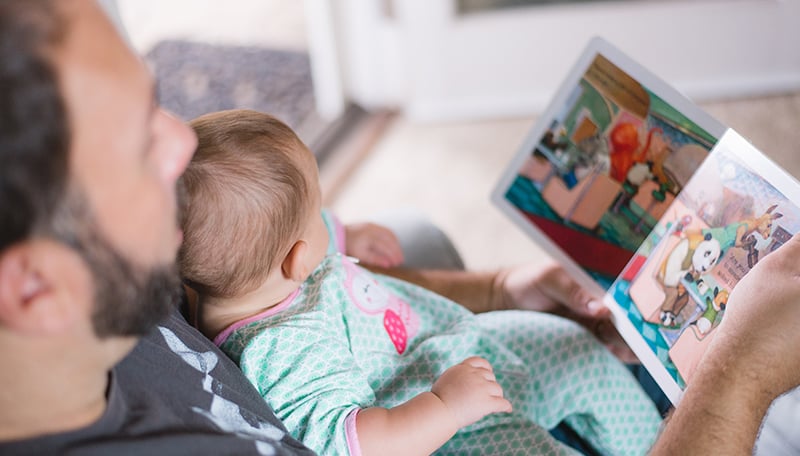
Reading to your child is one of the easiest, most enjoyable activities you can do as a parent or caregiver.
But one thing you might not realise is that it's one of the best things you can do to build a baby’s brain. Research shows that from the moment a baby is born, they have the capacity to connect with adults and build the brain’s neural pathways.
CoLab director Professor Donna Cross said the way to help kids build healthy brain architecture was through “serve and return” interactions.
“A child reaches out for interaction (“serves”) and the caregiver responds (“returns”).
“Brain development is an active process that requires consideration, intentionality, support and resources from caregivers and society,” Professor Cross said.
She said babies and young children also learnt through repetition. The continued exposure to books helps children learn as they discover new elements to the book each time they read it.
CoLab – a partnership between The Kids and the Minderoo Foundation - has launched the Bright Tomorrows Start Today campaign to lift public understanding that meaningful moments, early and often, build young brains.
Professor Cross said her favourite book to read to her children when they were young was The Magic Beach by Alison Lester.
“I loved the meter reading it aloud and my daughter Sarah (now 17 years old) and I just loved walking along the beach together and playing, picking up flotsam,’ Professor Cross said.
“But most of all, I loved the way the author described the sound of the waves as ‘sighs’ - it would take Sarah and I together back to our favourite (magic) beach and all that we imagined happened there when we weren’t looking, great for both our imaginations working together.”
The Kids director Professor Jonathan Carapetis said the rhyme and repetition in The Quangle Wangle’s Hat by Edward Lear, helped build young brains.
“It’s a delightful, nonsense poem full of alliteration and made-up words that seem to make perfect sense,” Professor Carapetis said.
“The story is one of tolerance and joy, and it seems designed to set children’s imaginations ablaze. What exactly does a pobble with no toes look like? Or a dong with a luminous nose? Or a fimble fowl? Or…”
Visit the Bright Tomorrows Start Today Facebook page to learn more about building young brains.
